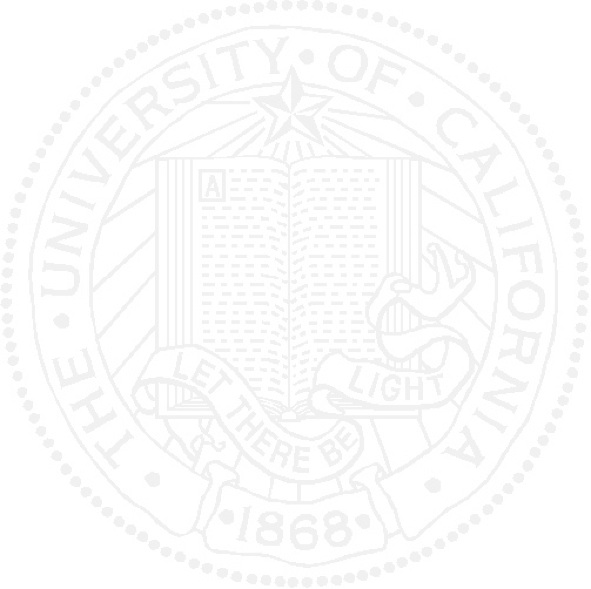research interests
I see research as an expression of the same drive that took explorers into uncharted wilderness a century ago. Eager anticipation, tedium punctuated by excitement, and a great deal of luck are all hallmarks of both research and exploration. Success is determined in large part—and, unfortunately, this is particularly clear in hindsight—by the choice of where to explore. For some, the ragged edge of theory is entirely appropriate. For me, I've found that other fields often contain ideas that can be applied to the vastly different set of problems I'm working to solve. (read more...)
My research is primarily on applied control systems with a focus on Autonomous and Embedded Systems. I founded the Autonomous Systems Lab at UC Santa Cruz as the place where applied control systems and navigation work is done. The work I do includes Guidance, Navigation and Control (GNC), GPS research, Sensor Fusion, Attitude Estimation, System Identification, and Robust Software Design for Real-Time Reactive Systems.
The overarching theme of my research has been to radically reduce cost (and hence increase the ubiquity) of Robotics and Autonomous Systems by adding increased sophistication and processing power (cheap) and reducing the quality and quantity of sensors (expensive).
sponsored projects
-
•ANIMA -- Accelerometer Network Integrator for Mobile Animals: a New Instrument Package for Integrating Behavior, Physiology and Ecology of Wild Mammals. Current wildlife tag technology runs “open loop,” with sampling set to occur periodically on the sensors, set once at deployment. We are designing a tag that can sense what the animal is doing (via signal processing techniques) and alter its sampling behavior accordingly (e.g., more frequently when hunting, less frequently when resting). Funded by the National Science Foundation.
-
•FASTNAV -- Autonomous vehicle navigation remains a challenging and difficult task in unstructured environments. This project aims to develop a set of heuristics that can be applied to vehicle navigation, and a set of metrics that can be used for probabilistic driving. Current work is focused on roughness models for exo-planetary rovers, probabalistic navigation based on a priori and a posteriori information, and Bezier Curve based path optimization. Funded by the NASA University Affiliated Research Center (UARC).
-
•ROBUST UAV AUTOPILOT -- Unmanned Air Vehicles (UAVs) represent a cost effective way of getting aerial sensor data quickly to those that need it most. However, their small size makes them difficult to fly and vulnerable to failures. We are designing an integrated robust autopilot for UAV control research in conjunction with the Naval Postgraduate School. Funded by NASA Aerospace Branch and the NASA University Affiliated Research Center (UARC).
-
•SOLAR AUTONOMOUS BOAT -- An unmanned solar-electric mono-hulled boat donated to the Jack Baskin School of Engineering by Willow Garage for continued research into energy scavenging for long duration ocean monitoring missions. Funded by Willow Garage and UC Discovery.
other projects
-
•ARVIN / R3EP / OVERBOT -- Autonomous Robotic Vehicle Instrument and Rapidly Reconfigurable Robotics Evaluation Platform. Off-road ground mobile robots with modular sub- and super-systems for in-situ evaluation of sensors, actuators, and algorithms. The Overbot platform has been folded into this project. Previously funded by the National Science Foundation.
-
•ATLANTIS PROJECT -- An unmanned wind propelled catamaran that is both self-guiding and self-sailing. Instead of a sail, the Atlantis has a rigid wing with a flying tail that is suspended on bearings allowing to rotate 360 degrees about in azimuth.
-
•DISTRIBUTED FORMATION CONTOL -- Algorithms to control a flock of autonomous vehicles or robots using Artificial Potential Functions. Formation control is based on a liquid water metaphor, and is computationally very efficient.
-
•EXPLORING THE WORLD WITH A RAY OF LIGHT -- Using a laser triangulation device to aide the blind in navigating the world. This is a dual purpose project, with the same technology being developed as an obstacle sensor for ground vehicle robotics. Previously funded by the National Science Foundation.
-
•MAMMARK TAG -- Develop a low-cost and small tag for marine mammal monitoring. The finished tag will be approximately the size of a matchbox and will record data for up to a year on a single charge. The data will enable a full trajectory reconstruction of a diving pinniped.
-
•METASENSOR TECHNOLOGY -- High performance Guidance, Navigation, and Control (GNC) using low-cost sensors. Combine better estimation algorithms, along with better calibration, and much better processing to make up for using low-cost sensors. Previously funded by NASA University Affiliated Research Center (UARC).
-
•NON-COHERENT RADAR FOR INTENT TRACKING -- Marine radar is non-coherent, and thus susceptible to various tracking errors. It is, however, a very cost effective way of covering large areas of land. This research aims to answer the question of if this data can be used to establish target “intent,” or classification.
-
•OVERBOT -- A DARPA Grand Challenge Vehicle donated to the Jack Baskin School of Engineering for continued research onto Applied Controls for Off-Road Ground Autonomous Vehicles. This research has been folded into the ARVIN/R3EP project.
-
•PERSONAL RAPID TRANSIT (PRT) SIMULATOR -- A people moving equivalent of a packet switched network, PRT relies on extensive automation to guide small lightweight pods on an overhead rail directly from origin to destination without intermediate stops. Funded by Center for Information Technology Research in the Interest of Society (CITRIS)
-
•SPACE TRAFFIC MANAGEMENT -- Currently there are over 12000 pieces of debris in orbit that constitute a collision hazard to the 800+ active satellites. Better orbit position estimation based on public US Air Force data is used to improve conjunction analysis and generate more accurate collision probabilities. Previously funded by NASA University Affiliated Research Center (UARC).
-
•STRUCTURED LIGHT OBSTACLE DETECTION -- Using a low-cost laser fan and camera to project a straight line of light into the environment. The shape of the line determines the location and shape of obstacles for mobile robots. This research has been folded into the EXPLORING THE WORLD WITH A RAY OF LIGHT project.





